Related Research Articles

Kenneth Lauren Burns is an American filmmaker, known for his style of using archival footage and photographs in documentary films.

The Irish War of Independence or Anglo-Irish War was a guerrilla war fought in Ireland from 1919 to 1921 between the Irish Republican Army and British forces: the British Army, along with the quasi-military Royal Irish Constabulary (RIC) and its paramilitary forces the Auxiliaries and Ulster Special Constabulary (USC). It was part of the Irish revolutionary period.
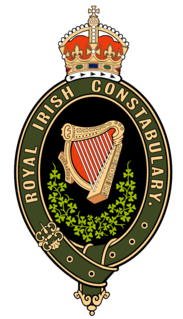
The Royal Irish Constabulary was the police force in Ireland from 1822 until 1922, when the country was part of the United Kingdom. A separate civic police force, the unarmed Dublin Metropolitan Police, patrolled the capital, while the cities of Derry and Belfast, originally with their own police forces, later had special divisions within the RIC. For most of its history, the ethnic and religious makeup of the RIC broadly matched that of the Irish population, although Anglo-Irish Protestants were over-represented among its senior officers.
Johnny Reb is the national personification of the common soldier of the Confederacy. During the American Civil War and afterwards, Johnny Reb and his Union counterpart Billy Yank were used in speech and literature to symbolize the common soldiers who fought in the Civil War in the 1860s. The symbolic image of Johnny Reb in Southern culture has been represented in its novels, poems, art, public statuary, photography, and written history. According to the historian Bell I. Wiley, who wrote about the common soldiers of the Northern and the Southern armies, the name appears to have its origins in the habit of Union soldiers calling out, "Hello, Johnny" or "Howdy, Reb" to Confederate soldiers on the other side of the picket line.

The Civil War is a 1990 American television documentary miniseries created by Ken Burns about the American Civil War. It was the first broadcast to air on PBS for five consecutive nights, from September 23 to 27, 1990.
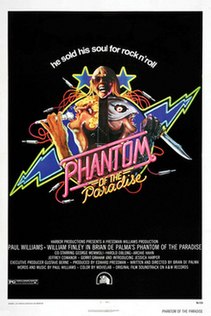
Phantom of the Paradise is a 1974 American rock musical horror comedy film written and directed by Brian De Palma and scored by and starring Paul Williams.

Mount Olivet Cemetery is a 206-acre (83 ha) cemetery located in Nashville, Tennessee. It is located approximately two miles East of downtown Nashville, and adjacent to the Catholic Calvary Cemetery. It is open to the public during daylight hours.
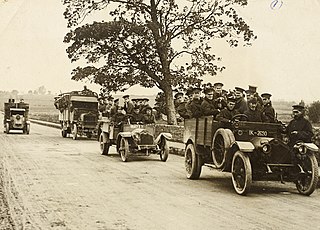
This is a timeline of the Irish War of Independence of 1919–21. The Irish War of Independence was a guerrilla conflict and most of the fighting was conducted on a small scale by the standards of conventional warfare.
Hugh Anthony Quarshie is a Ghanaian-born British actor. Some of his best-known roles include his appearances in the films Highlander (1986), The Church (1989), Star Wars: Episode I – The Phantom Menace (1999), and the Doctor Who episodes "Daleks in Manhattan" and "Evolution of the Daleks" (2007) as well as his long-running role as Ric Griffin in the BBC medical drama Holby City (2001–2020). Quarshie played the role of Ric for 19 years and was the longest-serving cast member in Holby City, until he confirmed his departure in October 2020. The character departed in Episode 1034 of Series 22, which aired on 10 November 2020.

Ric Burns is an American documentary filmmaker and writer. He has written, directed and produced historical documentaries since the 1990s, beginning with his collaboration on the celebrated PBS series The Civil War (1990), which he produced with his older brother Ken Burns and wrote with Geoffrey Ward.

Catharine Drew Gilpin Faust is an American historian and was the 28th President of Harvard University, the first woman to serve in that role. Faust is the former dean of the Radcliffe Institute for Advanced Study; she was Harvard's first president since 1672 without an undergraduate or graduate degree from Harvard and the first to have been raised in the South.
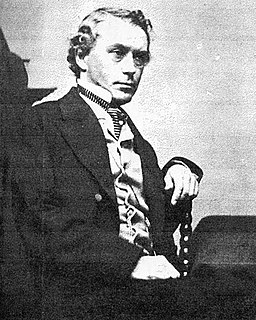
George Templeton Strong was an American lawyer, musician and diarist. His 2,250-page diary, discovered in the 1930s, provides a striking personal account of life in the 19th century, especially during the events of the American Civil War. It covers 1835 to 1875. The historian Paula Baker described him as "perhaps the northern equivalent of South Carolina's Mary Chesnut: quotable, opinionated, and a careful follower of events." He was a well-placed civic leader who was very well known in New York City. He served with distinction on the United States Sanitary Commission during the Civil War. But he never occupied top positions and had no special influence.

Nabil Kanso is an American painter. Kanso began his career in New York. His works deal with contemporary, historical and literary themes, and are marked by figurative imagery executed with spontaneous and vigorous handling of the paint and often done on large-scale formats. They reflect movement and tension embodying intense colors and symbolic forms addressing social, political, and war issues. The Vietnam War and the Lebanese Civil War have profoundly affected the development and scope of his themes dealing with violence and war. His long-running Split of Life series encompasses an extensive range of enormous paintings depicting scenes of human brutality and suffering.

Ric Estrada was a Cuban American comics artist who worked for companies including the major American publisher DC Comics. He also worked in comic strips, political cartoons, advertising, storyboarding, and commercial illustration.

Michael Kilroy was an Irish politician and guerrilla leader. He was an Irish Republican Army (IRA) officer in his native County Mayo during the Irish War of Independence and Irish Civil War. Subsequently, he was a Sinn Féin and later Fianna Fáil Teachta Dála (TD) for Mayo South.
The Jefferson Lecture in the Humanities is an honorary lecture series established in 1972 by the National Endowment for the Humanities (NEH). According to the NEH, the Lecture is "the highest honor the federal government confers for distinguished intellectual achievement in the humanities."

The Rineen ambush was an ambush carried out by the Irish Republican Army (IRA) on 22 September 1920, during the Irish War of Independence. The attack took place at Drummin Hill in the townland of Drummin, near the hamlet of Rineen, County Clare.
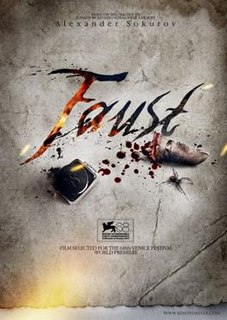
Faust is a 2011 Russian film directed by Alexander Sokurov. Set in the 19th century, it is a free interpretation of the Faust legend and its respective literary adaptations by both Johann Wolfgang von Goethe (1808) as well as Thomas Mann. The dialogue is in German. The film won the Golden Lion at the 68th Venice International Film Festival. At the 2012 Russian Guild of Film Critics Awards the film was awarded the prizes for Best Film, Best Director, Best Script and Best Male Supporting Actor. It received generally positive reviews from critics.
Steeplechase Films is a documentary production company founded in 1989 by filmmaker Ric Burns. They produce films focusing on events and people in American history, mainly for the PBS series American Experience. Ric and his company are best known for the eight-part, seventeen-and-a-half-hour series, New York: A Documentary Film, which premiered nationally on PBS to wide public and critical acclaim when broadcast in three installments in November 1999, September 2001, and September 2003.
Edmund Burke Whitman was a quartermaster during the American Civil War. After the war he was Superintendent of National Cemeteries where he developed the principles for the selection of new United States National Cemetery sites in April 1869. His principles specified that a site should be of historical interest, and it should have convenient access for visitors. He and his team of United States Colored Troops (USCT) located more than 100,000 bodies of Union fallen in the Southern U.S. Most of the information was given to him by the African American inhabitants, as the white populace was often hostile to his efforts.
References
- ↑ Levin, Kevin M. (September 19, 2012). "A Worthy Death: How Civil War Families Made Sense of Suffering". The Atlantic.
- ↑ Leland, John (September 29, 2012). "Finding Joys Close to the Nest". The New York Times.
- ↑ Ireland, Corydon (September 19, 2012). "Death and the Civil War". The Harvard Gazette .
- ↑ "Death & the Civil War: Drew Gilpin Faust & Ric Burns". Washington, D.C.: Library of Congress.